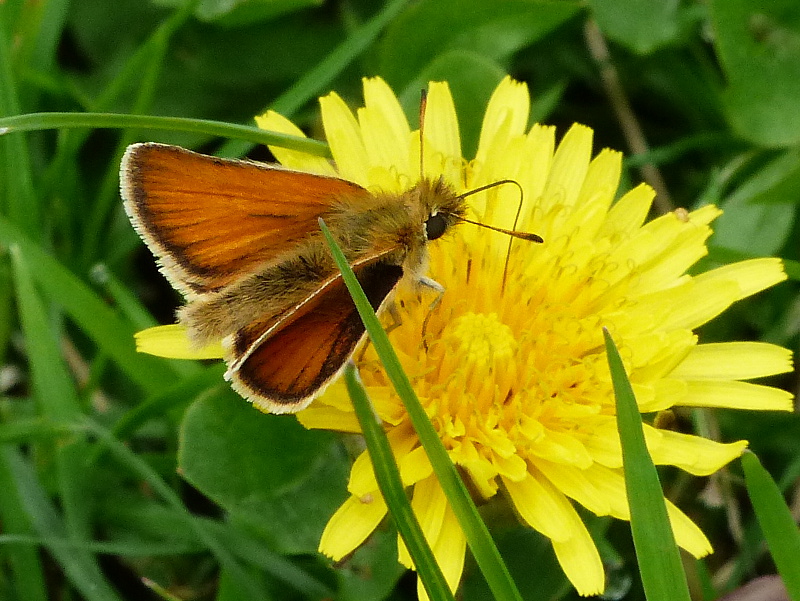
Widespread but declining resident
_DSC_0144_10July_SCPtn-2.jpg)
Distribution and Status
Since the surveys began in the 1980s there has been an alarming decline in the Essex Skipper both in terms of distribution and abundance. It is now found in only about a third of tetrads in our area compared to around a half at the turn of the century. It is not clear why although loss of habitat could be a factor. The newly established sites at Wormwood Scrubs and Kempton Nature Reserve in Middlesex attracted good numbers in 2022. Overall, there was an improvement in numbers in 2023. Because females emerge with immature eggs, nectar sources are very important for food to increase their reproductive potential (Field et al.)

Habitat Requirements
Tall uncut grassland, in fields, roadside verges and edges of woodland
Larval Foodplants
Cocks-foot Dactylis glomerata, Creeping Soft-Grass Holcus mollis. [Timothy Phleum pratense, False Brome Brachypodium sylvaticum, Heath False Bromes B. pinnatum]
Adult Food Sources
Cow Parsley Anthriscus sylvestris, Creeping Thistle Cirsium arvense, Lucerne Medicago sativa
Behaviour/Observation notes
Cloudy weather, early morning or evening when the skippers are most likely to be at rest, are the times to distinguish between this species and the similar Small Skipper. If either species is a male, then the nature of the sex brand on the forewing determines the species it relates to. A straight narrow line parallel to the edge of the forewing is suggestive of an Essex Skipper whereas a more crooked line indicates a Small Skipper. However, this distinguishing feature is probably not as reliable as the undersides of the antennae. If they are jet-black, the butterfly is an Essex Skipper otherwise if it is more orange-brown it is a Small Skipper
Life History
This species is on the wing from the end of June until mid August with a peak in the second week of July so there is some significant overlap with the Small Skipper although its flight season generally begins about two weeks later. Eggs are laid on the sheaths of grasses and hatching does not occur until the following spring when the larvae feed within tubes spun from the leaf blades. A cocoon is formed among the vegetation for pupation to take place

Further information
Photo gallery
Branch Annual Report (2023)
Identifying Skippers
UK distribution map
Full list of larval hostplants (Hesperidae)
Stevenage butterflies - additional notes
Account for 2022